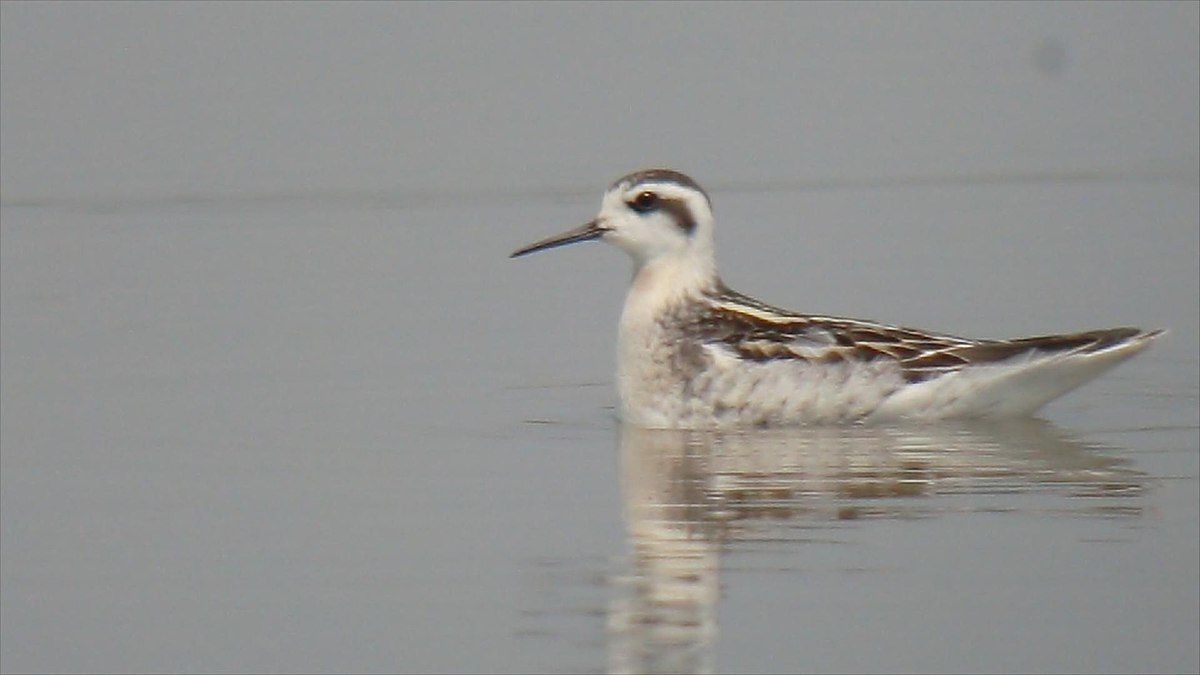
You would think that all shorebirds live at the shore but not this one. The red-necked phalarope (Phalaropus lobatus) spends most of his life at sea, spinning like a top.
Phalaropes live inland from June through August while they’re breeding in the sub-arctic northern hemisphere but most of the year — November through March — they’re out to sea on the tropical ocean. Their food is on or near the water’s surface.
Phalaropes feed by swimming in tight circles, rapidly picking tiny insect larvae, crustaceans, and mollusks from the water. Their feet are specially equipped for swimming. They have lobed toes like coots. (“Phalarope” is Ancient Greek for “coot toes.”)
In winter red-necked phalaropes don’t have red necks. Right now they’re wearing gray “basic” plumage, shown above, as they migrate to their final destinations in the southern hemisphere. Western birds take an inland route through the western U.S. but you probably won’t see one in the east. Except for a few stopovers at the Great Lakes, the eastern population flies immediately to the Atlantic Ocean.
If you really want to see red-necked phalaropes in beautiful breeding plumage you’ll have to wait for spring. Sparky Stensaas filmed this group feeding at their breeding grounds in Churchill, Manitoba, Canada.
Red-necked Phalarope spin feeding Churchill, Manitoba, Canada from Sparky Stensaas on Vimeo.
Look how fast they spin!
(photo from Wikimedia Commons; click on the caption to see the original. video by Sparky Stensaas on Vimeo)
The video is cool. That’s some crazy spinning. I wonder why how they don’t get sick.